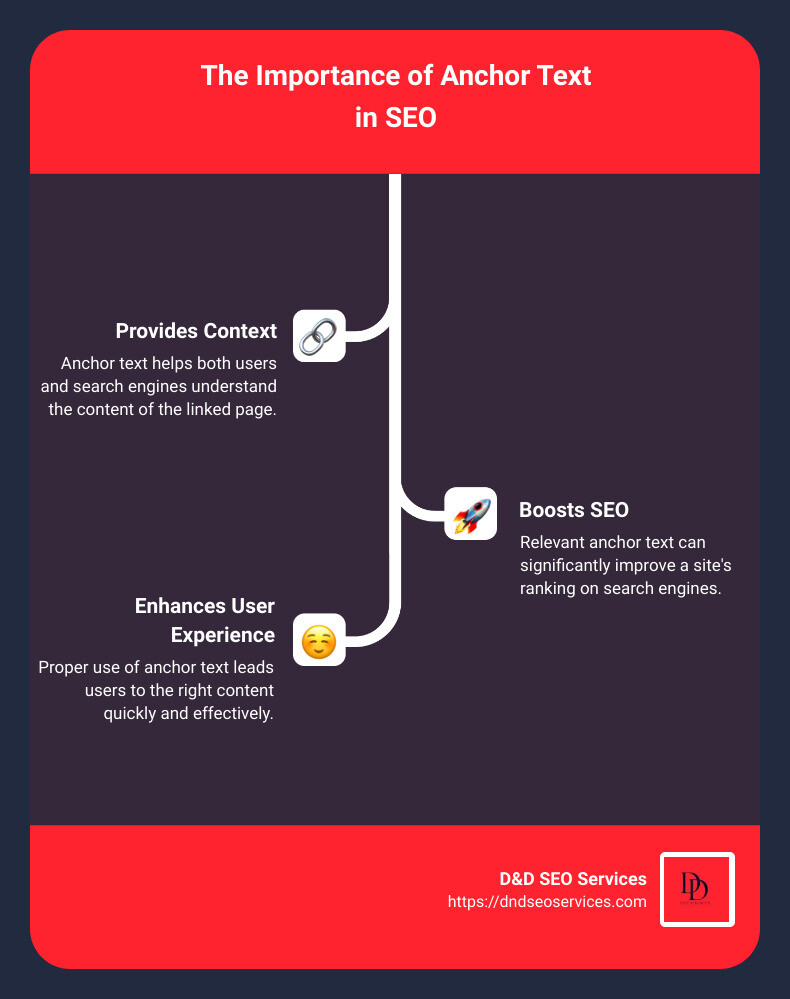Open uping the Power of Long-Tail Keywords in SEO Content Creation
The Power of Long-Tail Keywords in SEO Content Creation is profound. These specific, highly-targeted search phrases typically have lower search volumes but significantly lower competition. This makes them a powerful tool for small businesses looking to improve SEO without a massive budget.
Here’s why long-tail keywords matter:
- Lower Competition: Easier to rank for.
- Higher Conversion Rates: Attracts ready-to-buy users.
- Better User Experience: More relevant and specific content.
In the competitive online world, where larger businesses dominate short-tail keywords, long-tail keywords offer small businesses a fighting chance to climb search engine rankings and attract local customers.
I’m Danielle Birriel, Founder and CEO of D&D SEO Services. For over ten years, my team and I have empowered local businesses to thrive online by using the power of long-tail keywords in SEO content creation. We are passionate about helping you achieve your SEO goals.
The Power of Long-Tail Keywords in SEO Content Creation terms made easy:
Understanding Long-Tail Keywords
Definition
Long-tail keywords are specific, highly targeted search phrases that usually consist of three or more words. Unlike short-tail keywords, which are broad and general (e.g., “shoes”), long-tail keywords are more detailed and precise (e.g., “best running shoes for flat feet”).
Comparison with Short-Tail Keywords
Short-tail keywords, also known as head keywords, are broad search terms that often have high search volumes but also face intense competition. For example, the keyword “digital marketing” is a short-tail keyword with a vast number of searches but is extremely competitive.
In contrast, long-tail keywords have lower search volumes but are less competitive. This makes them easier to rank for. For instance, “digital marketing tips for small businesses” is a long-tail keyword that is more specific and faces less competition.
Specific Search Phrases
Long-tail keywords are often phrases that directly address specific user queries or needs. These phrases can be questions, detailed descriptions, or niche-specific terms. For example, someone searching for “how to filter cold brew coffee” is likely looking for a detailed guide on the topic. This specificity helps in creating content that is directly aligned with what users are searching for.
Niche Targeting
One of the most significant advantages of long-tail keywords is their ability to target niche markets. By focusing on these detailed phrases, businesses can attract a more specific audience that is further along in the buying process. For example, a blog post optimized for “best budget coffee grinder for French press” will attract coffee enthusiasts looking for a specific type of product, increasing the likelihood of conversion.
Real-World Example
Let’s look at a real-world example to understand the power of long-tail keywords. Imagine a small online bookstore. Competing for the keyword “books” would be nearly impossible due to the high competition. However, targeting a long-tail keyword like “best mystery novels of 2023” allows the bookstore to attract a specific audience interested in mystery novels, thus increasing the chances of making a sale.
Now that we have a clear understanding of what long-tail keywords are and how they differ from short-tail keywords, let’s dive into the benefits of long-tail keywords and how they can significantly impact your SEO strategy.
The Power of Long-Tail Keywords in SEO Content Creation
Benefits of Long-Tail Keywords
1. Increased Visibility
Long-tail keywords help your content stand out in a crowded online space. Because these keywords are more specific, they face less competition. This makes it easier for your content to rank higher in search engine results pages (SERPs). For example, instead of competing for the keyword “shoes,” targeting “best running shoes for flat feet” can help you reach a more precise audience.
2. Lower Competition
One of the major advantages of long-tail keywords is their lower competition. Short-tail keywords like “digital marketing” are highly competitive, making it difficult for smaller websites to rank. In contrast, long-tail keywords like “digital marketing tips for small businesses” face less competition, giving you a better chance of ranking higher.
3. Higher Conversion Rates
Long-tail keywords often attract visitors who are further along in the buying process. These users have specific needs and are more likely to convert. For instance, someone searching for “best budget coffee grinder for French press” is likely ready to make a purchase, leading to higher conversion rates.
4. Specific Audience Targeting
Long-tail keywords allow you to target a specific audience more effectively. By addressing detailed queries, you attract visitors who are looking for exactly what you offer. This precise targeting can lead to better engagement and higher conversion rates.
How Long-Tail Keywords Improve SEO
1. Higher Rankings
Because long-tail keywords face less competition, they are easier to rank for. This means your content is more likely to appear at the top of search results, increasing its visibility. Higher rankings lead to more traffic and, ultimately, more conversions.
2. Targeted Traffic
Long-tail keywords attract highly targeted traffic. Users searching for specific phrases are more likely to find your content relevant, increasing the chances of engagement and conversion. For example, a blog post optimized for “how to filter cold brew coffee” will attract users specifically interested in that topic.
3. Better User Experience
By creating content around long-tail keywords, you provide users with more relevant and valuable information. This improves the user experience, leading to longer time spent on your website, lower bounce rates, and increased engagement.
4. Lower Bounce Rates
When your content matches the specific needs of users, they are more likely to stay on your site and explore further. This reduces bounce rates and signals to search engines that your content is valuable, improving your overall SEO performance.
Next, let’s explore how to find long-tail keywords to incorporate into your SEO strategy.
How to Find Long-Tail Keywords
Using Keyword Research Tools
Keyword research tools are essential for finding long-tail keywords. They help you identify phrases that people are searching for, along with their search volumes and competition levels.
Google Keyword Planner is a free tool that lets you find keywords related to your business. Enter a broad term, like “content marketing,” and it will suggest long-tail variations such as “content marketing strategy template” or “benefits of content marketing.”
For more advanced options, tools like Ubersuggest and Moz Keyword Explorer offer detailed insights. These tools not only provide keyword suggestions but also show metrics like keyword difficulty and search trends. For example, Moz Keyword Explorer can reveal that “how to make cold brew coffee” has a lower competition score but decent search volume, making it a great target.
Analyzing Competitors
Analyzing your competitors can reveal valuable keyword opportunities. Use tools like Ubersuggest to see what keywords your competitors are ranking for. This can help you identify gaps in your own strategy.
Look at their content strategy, including blog posts and meta tags. If a competitor ranks well for “best budget coffee grinder,” you might consider creating content around similar or related keywords, such as “affordable coffee grinders for French press.”
Leveraging Google Suggestions
Google itself is a goldmine for long-tail keywords. Start typing a keyword into the search bar, and Google will auto-complete it with popular searches. For example, typing “how to make cold brew coffee” might bring up suggestions like “how to make cold brew coffee without a grinder.”
The People Also Ask section is another valuable resource. If you search for “how to make cold brew coffee,” you might see questions like “What is the ratio of coffee to water for cold brew?” Each of these questions can be a potential long-tail keyword to target.
Mining Forums and Q&A Sites
Forums like Reddit and Quora are excellent places to find long-tail keywords. People ask very specific questions on these platforms, which often reflect the kinds of searches they make on Google.
For instance, in the /r/Coffee subreddit, you might find questions like “how to clean a French press” or “best budget coffee grinder.” These specific queries are perfect for long-tail keyword targeting.
Q&A sites like Stack Exchange also provide rich keyword opportunities. Users ask detailed questions, and these can be directly used to create targeted content. For example, a question on Stack Exchange about “how to make iced coffee with a Keurig” can inspire a blog post optimized for that phrase.
By using these methods, you can uncover long-tail keywords that will help you create more targeted and effective SEO content.
Next, let’s dive into how to implement long-tail keywords in your content to maximize their impact.
Implementing Long-Tail Keywords in Content
Strategic Placement of Keywords
Strategic placement of long-tail keywords is essential for maximizing their impact on SEO. Here’s how to do it effectively:
Title Tags and Meta Descriptions:
Your title tags and meta descriptions are the first things users see in search results. They should be compelling and include your primary long-tail keyword. For example, if your keyword is “best budget coffee grinder for French press”, make sure it appears naturally within your title and meta description.
Headers and Subheaders:
Headers (H1, H2, H3) act as road signs for both readers and search engines. Use your long-tail keywords in these headers to guide users through your content. For instance, an H2 header might be “Why Choose the Best Budget Coffee Grinder for French Press?” This not only improves readability but also reinforces the main topic.
Body Content:
Incorporate long-tail keywords naturally within your body content. The key is to maintain a natural flow. For example, if you’re writing about “how to make cold brew coffee without a grinder,” ensure this phrase fits seamlessly into your paragraphs.
Creating Content Around Long-Tail Keywords
Creating content that targets long-tail keywords can significantly boost your SEO performance. Here’s how to approach it:
Blog Posts and Articles:
Write comprehensive blog posts and articles that address specific long-tail keywords. For example, a blog post titled “Step-by-Step Guide: How to Make Cold Brew Coffee Without a Grinder” can attract users searching for this exact information.
Product Descriptions:
For eCommerce sites, detailed product descriptions that include long-tail keywords can improve visibility and conversion rates. For instance, a product description for a coffee grinder might include phrases like “best budget coffee grinder for French press.”
User Intent:
Always align your content with user intent. If someone searches for “how to clean a French press,” they’re looking for a step-by-step guide, not a sales pitch. Make sure your content meets the needs of the searcher.
Optimizing Meta Titles and Descriptions
Optimizing meta titles and descriptions with long-tail keywords can improve your website’s click-through rates (CTR):
Relevant Searches:
Ensure your meta titles and descriptions are relevant to the search queries. For example, a meta title like “Top Tips on How to Make Cold Brew Coffee Without a Grinder” and a meta description that elaborates on what the user will learn can attract more clicks.
Targeted Audience:
Craft your meta descriptions to appeal to your targeted audience. Use persuasive language and include a call to action. For example, “Find the easiest way to make cold brew coffee without a grinder. Click to read our step-by-step guide!”
Internal Linking Strategies
Internal linking helps distribute page authority and improves navigation:
Anchor Text:
Use descriptive anchor text that includes long-tail keywords. For example, if you have a blog post about “how to make cold brew coffee,” you might link to it with anchor text like “learn how to make cold brew coffee without a grinder.”
Related Pages:
Link to related pages within your site to keep users engaged. For example, a blog post on “best coffee grinders” could link to another post on “how to clean a French press.” This not only helps with SEO but also improves the user experience.
Domain Authority:
Internal linking helps distribute domain authority across your site. Make sure to link from high-authority pages to new or less authoritative pages to boost their ranking potential.
By strategically placing long-tail keywords, creating targeted content, optimizing meta titles and descriptions, and using effective internal linking strategies, you can harness the power of long-tail keywords in SEO content creation. This approach not only improves your search rankings but also improves user experience and engagement.
Next, let’s dive into how to find long-tail keywords to maximize their impact.
Frequently Asked Questions about Long-Tail Keywords
What are long-tail keywords?
Long-tail keywords are specific, highly targeted search phrases that typically consist of three or more words. Unlike short-tail keywords, which are broad and general (e.g., “shoes”), long-tail keywords are more detailed and specific (e.g., “best running shoes for women with flat feet”). These keywords are designed to capture a specific search intent and often cater to niche markets, making them invaluable for SEO strategies.
Why are long-tail keywords important for SEO?
Long-tail keywords are crucial for several reasons:
- Lower Competition: Since they are more specific, long-tail keywords usually have less competition. This increases your chances of ranking higher in search engine results.
- Higher Conversion Rates: These keywords are more aligned with the user’s intent, often indicating that the searcher is closer to making a purchase or taking a specific action. This leads to higher conversion rates.
- Improved User Experience: Long-tail keywords help in creating content that is more relevant to the user’s needs, improving user engagement and reducing bounce rates.
How do long-tail keywords improve conversion rates?
Long-tail keywords improve conversion rates by targeting users who are further along in the buying process. For example, someone searching for “best price Nike Air Zoom Pegasus 38” is likely ready to make a purchase, compared to someone searching for “running shoes.” By focusing on these specific phrases, you attract visitors who are more likely to convert into customers.
This targeted approach not only improves the relevance of your content but also ensures that you attract a more qualified audience, increasing your overall return on investment (ROI).
Next, let’s dive into how to find long-tail keywords to maximize their impact.
Conclusion
In summary, long-tail keywords offer numerous benefits for your SEO strategy. They help you achieve increased visibility, attract targeted traffic, and improve conversion rates. By focusing on specific search phrases, you can better meet user intent and create more relevant content. This leads to a better user experience and lower bounce rates.
The Importance of Long-Tail Keywords
Long-tail keywords are essential because they allow you to target niche markets with less competition. This makes it easier to rank higher in search engine results. Additionally, these keywords often indicate that the user is closer to making a purchase or taking a specific action, which results in higher conversion rates.
Personalized SEO Strategies with D&D SEO Services
At D&D SEO Services, we understand that every business is unique. That’s why we offer personalized SEO strategies custom to your specific needs. Whether you’re looking to improve your local SEO or improve your overall online presence, our team of experts is here to help.
Local SEO Expertise
Local SEO is more crucial than ever. According to recent data, 46% of all internet searches have local intent. This means a strong local SEO strategy can significantly boost your online visibility and attract more customers from your community. Our team specializes in optimizing your online presence to make sure you stand out in local search results.
Ready to open up the power of long-tail keywords for your business? Contact us today to get started on your journey to online success!
By integrating long-tail keywords into your SEO strategy, you can create a stronger digital narrative that resonates with your audience, fostering growth and sustained customer relationships.






